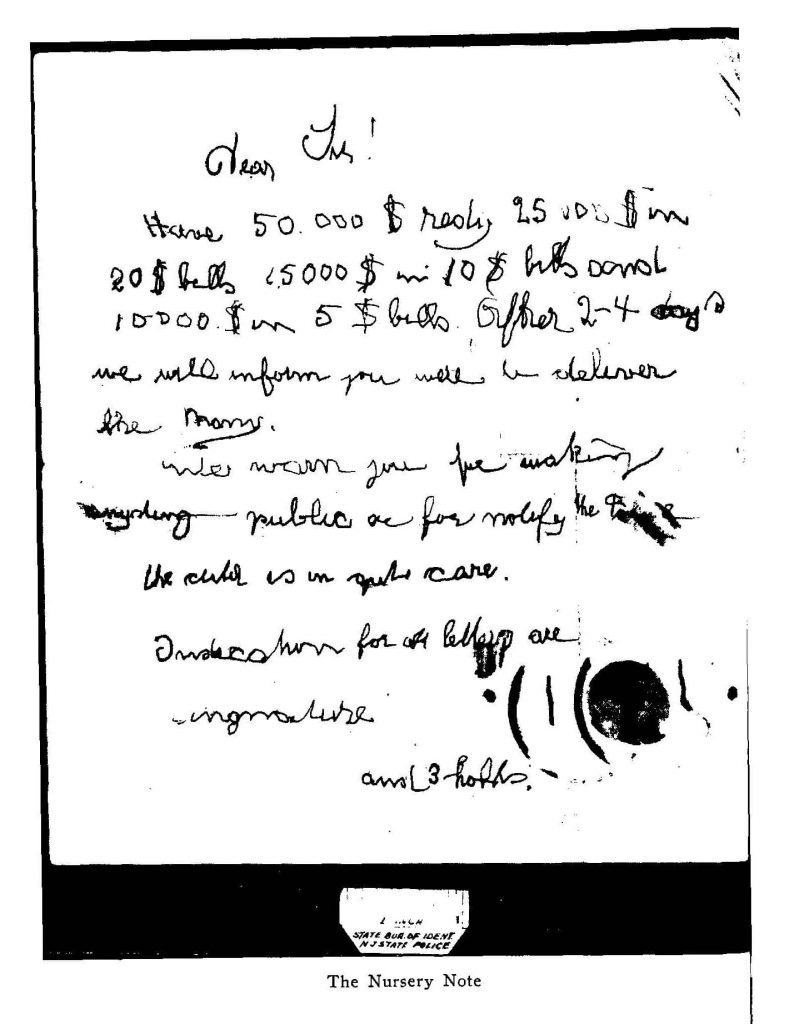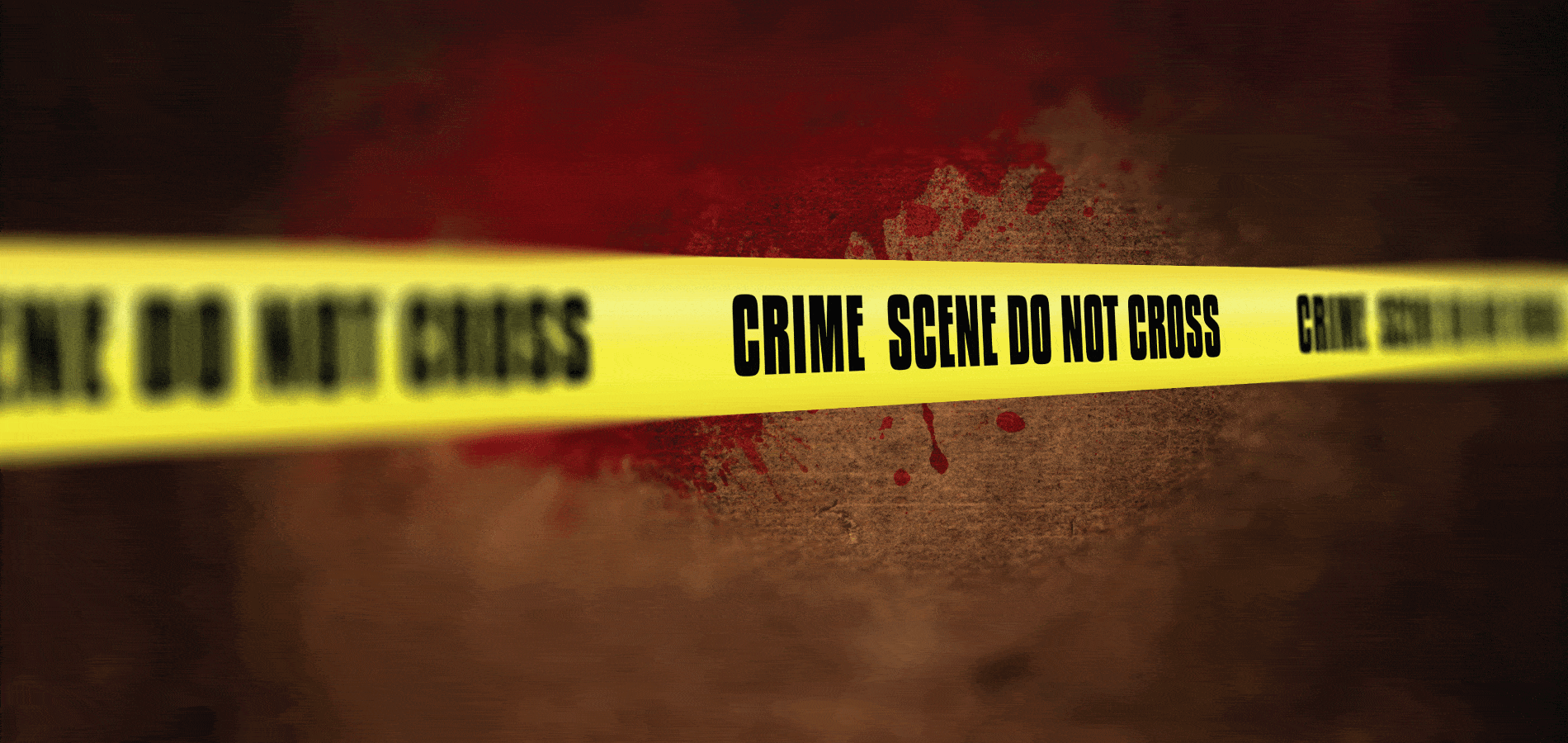In the early morning hours of December 26, 1996, the Ramsey family [1]Charles Brennan, Conduct Unbecoming: Inside the JonBenet Ramsey Case, 35 INTL. Soc’y Barristers Q. 325 (2000). This article is found in HeinOnline’s Bar Journals Library. was preparing to leave their Boulder, CO home for vacation. As John and Patsy Ramsey made preparations for their trip, they discovered a ransom note on the kitchen staircase. The parents soon realized that their six-year-old daughter, JonBenét, was missing. The nearly three-page ransom note demanded $118,000 for the little girl’s safe return and warned the parents not to involve the police. The Ramseys were well-off, and JonBenét was a child beauty queen with angelic blonde hair and big, blue eyes.
Hours later, as police and family members searched the house, John Ramsey found his daughter’s body in the basement. She had been strangled with a garrote, her skull fractured. The murder of JonBenét Ramsey set off a national media frenzy that fueled supermarket tabloids for decades, its twists and turns and unanswered questions casting suspicion onto strangers, JonBenét’s parents, and even her nine-year-old brother.
The Note
JonBenét Ramsey is certainly not the first child killed for ransom in America, nor is she the first such case covered on the HeinOnline Blog. Perhaps the most famous case in American history is the kidnapping of Charles Lindbergh, Jr. from the Lindbergh family home in 1932, which was itself the subject of endless international press coverage. In that case, multiple ransom notes were exchanged, signed by interconnected circles with holes punched through the paper.

From the beginning, police, pundits, and armchair detectives focused on the ransom note left in the Ramsey house. One commentator described the note as “the veritable War and Peace of ransom notes”[2]Charles Brennan, Conduct Unbecoming: Inside the JonBenet Ramsey Case, 35 INTL. Soc’y Barristers Q. 325 (2000). This article is found in HeinOnline’s Bar Journals Library. because of its unusual length. The note claimed to be written by a “small foreign faction” and contained quotes and references to action movies. It was written on paper from the Ramsey house and demanded almost the same amount of money that John Ramsey had received as a bonus from work.
All this led police to believe the note was staged. Handwriting analysis,[3]John Vreeland Haring. Hand of Hauptmann: The Handwriting Expert Tells the Story of the Lindbergh Case (1937). This book is found in HeinOnline’s World Trials. which had been used to tie Bruno Richard Hauptmann to the Lindbergh kidnapping, initially led police to suspect that Patsy Ramsey had written the note;[4]Hal Haddon, Representing a Celebrity Criminal Defendant, 33 LITIG. 19 (2007).This article is found in HeinOnline’s ABA Law Library Collection Periodicals. subsequent analyses by multiple experts were ultimately never able to prove that she did. Despite Patsy Ramsey’s consistent denials,[5]Wolf v. Ramsey, 253 F.Supp.2d 1323. This document can be found through HeinOnline’s integration with Fastcase. her role as its author remains a popular theory. Patsy Ramsey died in 2006.
Leading Theories
A Family Member
The two main theories over who is responsible for JonBenét’s death are that the crime was committed either by a family member or by an unknown intruder. According to the latest statistics from the FBI,[6]A complete archive of criminal statistics compiled by the FBI back to 1930 can be accessed in HeinOnline. of the 13,927 murders committed in 2019, 1,372 of these crimes were committed by strangers. Media scrutiny on the family was intense. Early coverage of the case suggested a link between JonBenét’s death and her involvement in beauty pageants.[7]Martha Heltsley & Thomas C. Calhoun, The Good Mother: Neutralization Techniques Used by Pageant Mothers, 24 DEVIANT BEHAV. 81 (2003). This article is found in HeinOnline’s Law Journal Library. At worst, some argued, JonBenét had attracted a pedophilic killer through the pageants, and at best, the pageants demonstrated that JonBenét was exploited by her parents throughout her short life. Endless videotape[8]Ann Kibbey, Trial by Media: DNA and Beauty-Pageant Evidence in the Ramsey Murder Case, 43 N. Y. L. Sch. L. REV. 691 (1999). This article is found in HeinOnline’s Law Journal Library of JonBenét performing at pageants was shown on television, her headshots adorning tabloid covers.
Speculation[9]Ann Kibbey, Trial by Media: DNA and Beauty-Pageant Evidence in the Ramsey Murder Case, 43 N. Y. L. Sch. L. REV. 691 (1999). This article is found in HeinOnline’s Law Journal Library produced motives and theories for every member of the family: John Ramsey sexually abused and killed his daughter. Patsy Ramsey beat JonBenét to death in a rage after the little girl wet the bed. The parents colluded to protect the real murderer, their nine-year-old son, Burke. John Ramsey likened[10]Robert D. Richards & Clay Calvert, Press Coverage of the JonBenet Ramsey Murder and Its Legal Implications: A Dialogue with John and Patsy Ramsey and Their Attorney, L. Lin Wood, 10 COMMLAW Conspectus 227 (2002). This … Continue reading the suspicion faced by the family to conspiracy theories that claimed Charles Lindbergh had killed his own son (for whatever it may be worth, Bruno Richard Hauptman, who was executed for the crime, maintained his innocence all the way to the electric chair).
An Intruder
The other leading theory into who killed JonBenét was that an unknown intruder gained entry to the house via the basement window, carried JonBenét down to the basement, and killed her. Critics of the intruder theory point to undisturbed cobwebs and dust around the basement window. But the Ramseys’ affluent neighborhood had a history of burglaries in the months before JonBenét’s murder. Blood and a boot print[11]Robert D. Richards & Clay Calvert, Press Coverage of the JonBenet Ramsey Murder and Its Legal Implications: A Dialogue with John and Patsy Ramsey and Their Attorney, L. Lin Wood, 10 COMMLAW Conspectus 227 (2002). This … Continue reading were found at the crime scene that did not match anyone in the family.
In 1999, a Colorado grand jury voted to indict John and Patsy Ramsey on two counts of child abuse and obstruction of a murder investigation. Ultimately, the district attorney refused to prosecute, citing a lack of evidence.
Trial by Media
In some ways, the media circus over who killed JonBenét Ramsey has never ended. Books, documentaries, endless television specials, and podcasts have been released continuously about the case since 1996. John Ramsey theorized that the family’s personal tragedy attracted such rabid media interest because it was “a real-life, ready-for-prime-time soap opera…you couldn’t have made this stuff up.”[12]Robert D. Richards & Clay Calvert, Press Coverage of the JonBenet Ramsey Murder and Its Legal Implications: A Dialogue with John and Patsy Ramsey and Their Attorney, L. Lin Wood, 10 COMMLAW Conspectus 227 (2002). This … Continue reading
Starting in 1999, the Ramseys sued various tabloids for defamation. John and Patsy were themselves sued[13]Wolf v. Ramsey, 253 F.Supp.2d 1323. This document can be found through HeinOnline’s integration with Fastcase. twice for defamation over claims in their 2001 book, The Death of Innocence,[14]Robert D. Richards & Clay Calvert, Press Coverage of the JonBenet Ramsey Murder and Its Legal Implications: A Dialogue with John and Patsy Ramsey and Their Attorney, L. Lin Wood, 10 COMMLAW Conspectus 227 (2002).This … Continue reading about potential suspects in the case. Burke Ramsey has filed numerous defamation suits against CBS over claims that he killed his sister; the latest such suit was settled in early 2019.
In 2006, John Mark Karr, a 41-year-old former schoolteacher, was extradited from Thailand after he confessed to killing JonBenét. DNA evidence failed to connect Karr to the crime and his claims were ultimately discredited.
Although the court of public opinion has pronounced multiple verdicts in the case, to date, no one has been charged with JonBenét Ramsey’s murder. The case remains open with the Boulder Police Department.
Learn More
You can learn more about false confessions, trial by media, and even the history of handwriting analysis with HeinOnline. Try targeting your simple search by changing how results are sorted to show you the Most Cited first. Search directly for a term appearing in the title catalog to unearth hidden gems from the past. Some resources for exploring these topics include:
- Harold W. Sullivan. Trial by Newspaper (1961).
- Steven A. Drizin & Richard A. Leo, The Problem of False Confessions in the Post-DNA World, 82 N.C. L. REV. 891 (2004).
- Keith A. Findley & Michael S. Scott, The Multiple Dimensions of Tunnel Vision in Criminal Cases, 2006 Wis. L. REV. 291 (2006).
- Persifor Frazer. Manual of the Study of Documents to Establish the Individual Character of Handwriting and to Detect Fraud and Forgery including Several New Methods of Research (1894).
- Richard A. Leo & Richard J. Ofshe, Consequences of False Confessions: Deprivations of Liberty and Miscarriages of Justice in the Age of Psychological Interrogation, 88 J. CRIM. L. & CRIMINOLOGY 429 (1998).
- Welsh S. White, Police Trickery In Inducing Confessions, 127 U. PA. L. REV. 581 (1979).
- George W. Wood. Scientific Handwriting Testimony (1922).
- Robert S. Stephen, Prejudicial Publicity Surrounding a Criminal Trial: What a Trial Court Can Do to Ensure a Fair Trial in the Face of a Media Circus, 26 Suffolk U. L. REV. 1063 (1992).
- Robert Saudek. Anonymous Letters: A Study in Crime and Handwriting (1933).
HeinOnline Sources[+]
| ↑1, ↑2 | Charles Brennan, Conduct Unbecoming: Inside the JonBenet Ramsey Case, 35 INTL. Soc’y Barristers Q. 325 (2000). This article is found in HeinOnline’s Bar Journals Library. |
|---|---|
| ↑3 | John Vreeland Haring. Hand of Hauptmann: The Handwriting Expert Tells the Story of the Lindbergh Case (1937). This book is found in HeinOnline’s World Trials. |
| ↑4 | Hal Haddon, Representing a Celebrity Criminal Defendant, 33 LITIG. 19 (2007).This article is found in HeinOnline’s ABA Law Library Collection Periodicals. |
| ↑5, ↑13 | Wolf v. Ramsey, 253 F.Supp.2d 1323. This document can be found through HeinOnline’s integration with Fastcase. |
| ↑6 | A complete archive of criminal statistics compiled by the FBI back to 1930 can be accessed in HeinOnline. |
| ↑7 | Martha Heltsley & Thomas C. Calhoun, The Good Mother: Neutralization Techniques Used by Pageant Mothers, 24 DEVIANT BEHAV. 81 (2003). This article is found in HeinOnline’s Law Journal Library. |
| ↑8, ↑9 | Ann Kibbey, Trial by Media: DNA and Beauty-Pageant Evidence in the Ramsey Murder Case, 43 N. Y. L. Sch. L. REV. 691 (1999). This article is found in HeinOnline’s Law Journal Library |
| ↑10, ↑11 | Robert D. Richards & Clay Calvert, Press Coverage of the JonBenet Ramsey Murder and Its Legal Implications: A Dialogue with John and Patsy Ramsey and Their Attorney, L. Lin Wood, 10 COMMLAW Conspectus 227 (2002). This article is found in HeinOnline’s Law Journal Library. |
| ↑12 | Robert D. Richards & Clay Calvert, Press Coverage of the JonBenet Ramsey Murder and Its Legal Implications: A Dialogue with John and Patsy Ramsey and Their Attorney, L. Lin Wood, 10 COMMLAW Conspectus 227 (2002). This article is found in HeinOnline’s Law Journal Library. |
| ↑14 | Robert D. Richards & Clay Calvert, Press Coverage of the JonBenet Ramsey Murder and Its Legal Implications: A Dialogue with John and Patsy Ramsey and Their Attorney, L. Lin Wood, 10 COMMLAW Conspectus 227 (2002).This article is found in HeinOnline’s Law Journal Library. |



